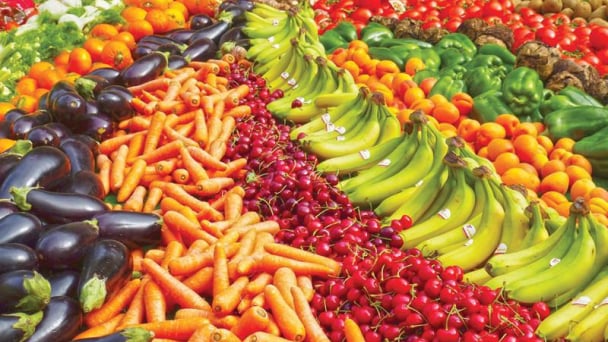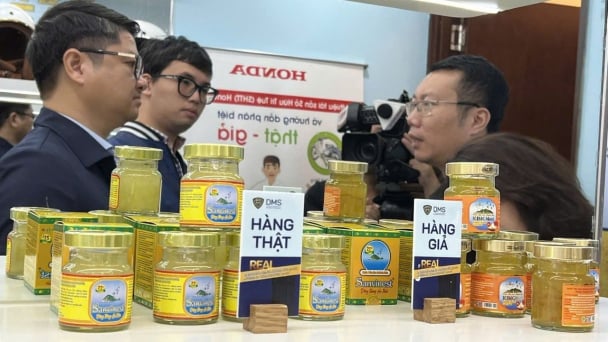May 21, 2025 | 03:12 GMT +7
May 21, 2025 | 03:12 GMT +7
Hotline: 0913.378.918
May 21, 2025 | 03:12 GMT +7
Hotline: 0913.378.918

It was estimated that the total volume of animal feed in Vietnam last year reached 20 million tonnes, an increase of 5.6 per cent compared with that of 2019.
In 2020, Vietnam’s imports of animal feed and raw materials for animal feed production continued growing with the import value of nearly US$4 billion.
According to the General Department of Vietnam Customs, in December 2020, the imports of animal feed and raw materials to Vietnam except for soybeans and corn hit US$374.3 million, an increase of 26.43 per cent compared with the same period of 2019.
In 2020, the total import value of these products was US$3.84 billion or 3.75 per cent higher than that of 2019.
Major suppliers of animal feed and raw materials for Vietnam in 2020 include Argentina, the US, Brazil, China, Thailand and India.
Of them, Argentina remained its biggest supplier with US$1.53 billion, up 2.64 per cent against that of 2019 and accounted for 40 per cent of market shares. It was also the only market with the export value of animal feed and raw materials to Vietnam topped US$ billion last year.
US was the second biggest animal feed and raw materials supplier of Vietnam last year with the export value of US$505.56 million, down 19.55 per cent against that of 2019 and accounted for 13.16 per cent of market shares.
Following the US was Brazil which exported to Vietnam shipments of US$ 391.67 million, up 83.34 per cent against 2019 and accounted for 10.2 per cent of market shares.
In December 2020 only, the export value from Brazil to Vietnam rose 337.98 per cent compared with the same period of 2019.
Besides Brazil, other animal feed suppliers also saw a year-to-year increase of over 100 per cent in December 2020 are India ( 303.99 per cent), Australia (407.03 per cent), Belgium (118.12 per cent), Mexico ( 380.86 per cent) and Japan (211.62 per cent).
Last year, the imports of animal feed and raw material from Chile grew at the highest rate of 199.49 per cent, hitting US$19.98 million.
Other export markets that saw strong growth include Mexico ( up 69.54 per cent to US$4.32 billion), Japan ( up 56.72 per cent to US$3.03 million), Belgium (up 55.52 per cent to US$11.81 million).
However, those markets accounted for a small proportion of the total export value of animal feed and raw materials to Vietnam.
According to Livestocks Production Department under the Ministry of Agriculture and Rural Development, in 2020, Vietnam imported 19.6 million tones of raw materials (including corn and soybeans) for animal feed production, including 11.4 million tonnes of energy-rich ingredients, 7.5 million tonnes of ingredients rich in protein and 660,900 tonnes of supplementary.

A animal feed factory in Vietnam.
It was estimated that the total volume of animal feed in Vietnam last year reached 20 million tonnes, an increase of 5.6 per cent compared with that of 2019.
Of the total animal feed, pig feed accounted 45 per cent, down 4.4 per cent against that of 2019; poultry feed accounted for 50 per cent, up 11.9 per cent against that of 2019; others accounted 5 per cent, up 69.8 per cent against that of 2019./.
Translated by Megan Phan

(VAN) Oliyar, a prominent Ukrainian oil and fat manufacturer, has revealed plans to build a farm for 2.3 million laying hens in the Lviv region. The additional production quantities promise to change the competitive landscape of the egg market of the Eastern Europe region.

(VAN) On May 15, Ministry of Agriculture and Environment of Vietnam hosted the 'Connecting Vietnam - Germany agricultural, forestry and fishery trade' seminar in Berlin, Germany.

(VAN) In the face of counterfeit and imitation products, Khanh Hoa Salanganes Nest Company hopes for the prompt completion of the legal framework, strict enforcement against violations, and protection of the bird’s nest brand.

(VAN) Japan's efforts to lower the price of rice through the release of its stockpile may finally be making some progress, albeit at a snail's pace.

(VAN) U.S. tariffs are not only a 'shock', but also an opportunity for Vietnamese businesses to renew their mindset toward comprehensive development.

(VAN) As Bac Giang lychee enters the harvest season, Minister Do Duc Duy expects that the fruit will contribute greatly to agricultural exports due to standardized production and deep processing.

(VAN) Consumers have shown a preference for free-range eggs, but those farming systems are more vulnerable to biosecurity risks like bird flu.